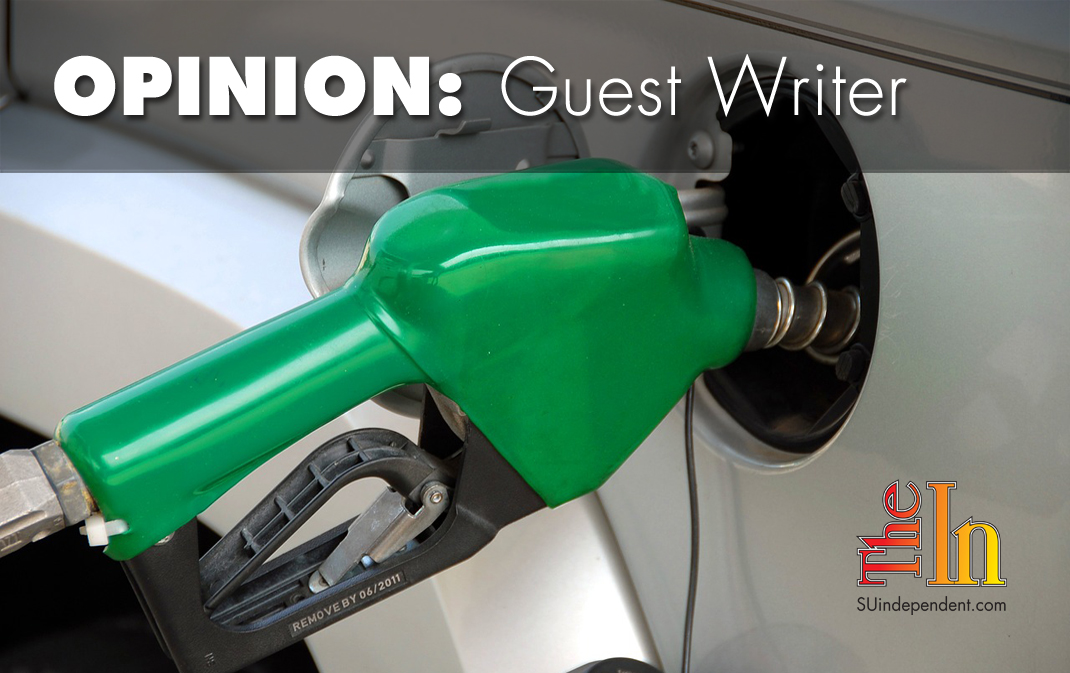
Will Californians strike a blow for lower taxes and gasoline prices?
By Merrill Matthews
Earlier this fall, Californians had the opportunity to get the government out of their pockets — or, more accurately, out of their gas tanks. Not completely, but it’s a start.
Last year, the Golden State’s legislature increased gasoline and diesel fuel taxes and vehicle fees. Proposition 6, on the November ballot, would have repealed those tax increases and required voter approval for future gasoline and vehicle fee increases. The measure failed to pass. Californians should have known better.
Last year’s 12-cent-per-gallon gasoline tax increase pushed the state’s gas tax to 55.22 cents per gallon, the second highest in the nation after Pennsylvania. That’s on top of the federal gasoline excise tax of 18.40 cents per gallon.
The stated goal of the tax increase was to raise about $6 billion a year for road repair. But when it comes to gasoline and diesel taxes, what states claim and what they actually do can be two different things.
According to the Federal Highway Administration, California raised $4.8 billion from the state’s gas tax in 2016, before the additional 12-cent tax took effect. Nearly $4 billion went to “highway purposes.” But $578 million was redirected to mass transit, and $247 million was spent on “general purposes.”
There’s more. The state collected $6.97 billion from motor vehicle registrations. And while most was devoted to highways, $709 million was spent on mass transit. And $304 million, as well as $408 million from toll revenues, was spent on general purposes.
So of the various California gasoline taxes and car fees, $1.3 billion was redirected from road repair to mass transit and $960 million for general purposes. Would Sacramento have needed that 12-cent increase if it had funneled all of that revenue to road repair?
California is not alone. Nationwide, the FHA says that about 25 percent of gasoline taxes are redirected to mass transit and other purposes. And those other purposes vary significantly. For example, about 25 percent of gasoline taxes in Texas are redirected to public education.
Now states are free to spend gasoline tax and fees however they choose. But it’s duplicitous to impose a tax ostensibly for the purposes of road and highway building and repair and then redirect those funds to other purposes. And then whine that the state needs even more money for infrastructure.
Another problem is that gasoline taxes are some of the most “regressive,” meaning they hit lower-income folks harder than they do those with higher income.
Liberals tend to strongly oppose regressive tax structures; they prefer a “progressive tax system,” one that imposes higher rates on higher-income people.
Yet many of the states with the highest gasoline taxes — e.g., California, Washington, Pennsylvania, New York, Illinois, etc. — can be some of the most left-leaning states.
Put bluntly, high-gas-tax states don’t have a revenue problem. They have a spending problem. Had California utilized all those gasoline- and car-related tax revenues for road building and repair — nearly $2.3 billion — it wouldn’t have needed to raise the gas tax.
States need to be held financially and politically accountable for spending decisions. If they claim they need a gasoline tax increase in order to repair the roads, that’s what they should use the money for. But they won’t unless voters hold them accountable.
Californian voters failed to do that this November. Other states should learn from their mistake.
Merrill Matthews is a resident scholar with the Institute for Policy Innovation in Dallas, Texas. Follow him on Twitter @MerrillMatthews.
The viewpoints expressed above are those of the author and do not necessarily reflect those of The Independent.
How to submit an article, guest opinion piece, or letter to the editor to The Independent
Do you have something to say? Want your voice to be heard by thousands of readers? Send The Independent your letter to the editor or guest opinion piece. All submissions will be considered for publication by our editorial staff. If your letter or editorial is accepted, it will run on suindependent.com, and we’ll promote it through all of our social media channels. We may even decide to include it in our monthly print edition. Just follow our simple submission guidelines and make your voice heard:
—Submissions should be between 300 and 1,500 words.
—Submissions must be sent to editor@infowest.com as a .doc, .docx, .txt, or .rtf file.
—The subject line of the email containing your submission should read “Letter to the editor.”
—Attach your name to both the email and the document file (we don’t run anonymous letters).
—If you have a photo or image you’d like us to use and it’s in .jpg format, at least 1200 X 754 pixels large, and your intellectual property (you own the copyright), feel free to attach it as well, though we reserve the right to choose a different image.
—If you are on Twitter and would like a shout-out when your piece or letter is published, include that in your correspondence and we’ll give you a mention at the time of publication.



